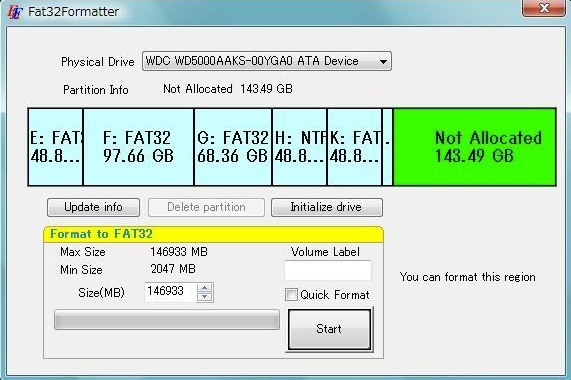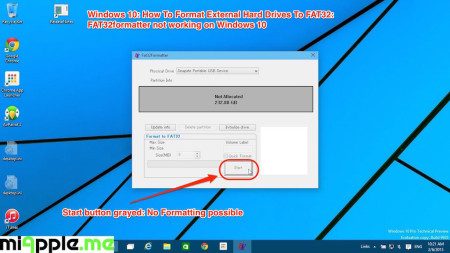

- #How to format my hard drive to fat or exfat how to
- #How to format my hard drive to fat or exfat install
- #How to format my hard drive to fat or exfat full
- #How to format my hard drive to fat or exfat portable
- #How to format my hard drive to fat or exfat software
Note: We'll use the Windows version of R-Studio to show the process of data recovery, but these directions are fully applicable to the Mac and Linux versions of R-Studio. You will not have to re-install or restart R-Studio to register it. This lets you see if it can successfully recover your files and therefore, if it's worth buying. R-Studio in its demo mode allows you to perform all the necessary data recovery operations, except saving the recovered files. Right now, it is not necessary to buy and register the program.
#How to format my hard drive to fat or exfat install
#How to format my hard drive to fat or exfat software
Neither R-Studio nor other data recovery software will help you in such cases. They have special equipment, software, and, most importantly, the required skills to work with such drives.
#How to format my hard drive to fat or exfat how to
conditions of your disk, and we explain how to do that below. ( Self-Monitoring, Analysis and Reporting Technology) utility warns that a severe hardware failure event has occurred. The system does not recognize the device at all, or it appears with an unusual or garbled name.Signs that a disk has a physical failure include: Beyond checking that the cables are firmly connected, any "do it yourself" data recovery efforts may actually worsen your chances of recovering the data if your disk has a serious physical malfunction. If not, it's best to seek out the services of a professional data recovery specialist. We presume that your disk is in good physical shape. It may also be used on smaller hard drives (40 to 50 GB, or less). The FAT file system is usually used on smaller (up to 32+ GB) memory cards and USB sticks.
#How to format my hard drive to fat or exfat full

For this walkthrough, we'll show you how to get your files back after an exFAT partition was deleted and then recreated in the same place on the drive.
#How to format my hard drive to fat or exfat portable
Because exFAT disks are often used in portable or removable storage, they are susceptible to accidental deletion or reformatting to another file system. In this article, we'll walk you through a typical exFAT data recovery scenario. To meet the growing need for data recovery capabilities with the latest file systems, R-Studio comes fully equipped with the ability to recover data from an exFAT disk. With better cross-platform support than NTFS and greater flexibility than FAT32, exFAT is the de facto file system for SD cards over 32GB and is quickly becoming a popular default choice for mobile platforms and external hard drives as well. More and more drives are using the exFAT file system.


 0 kommentar(er)
0 kommentar(er)
